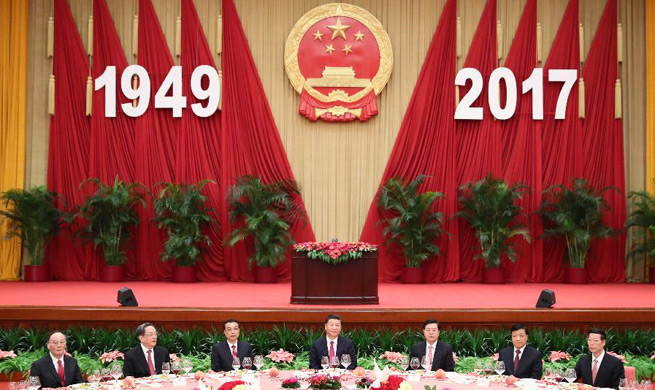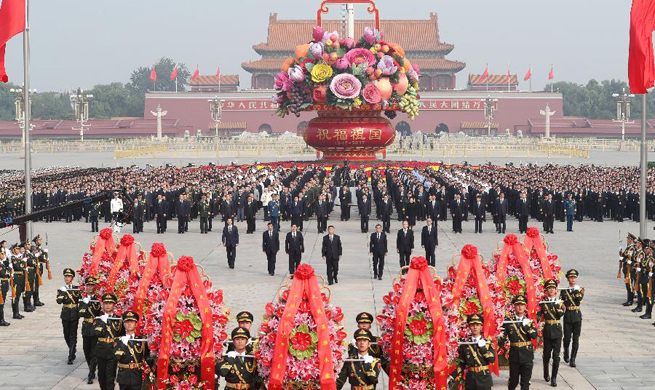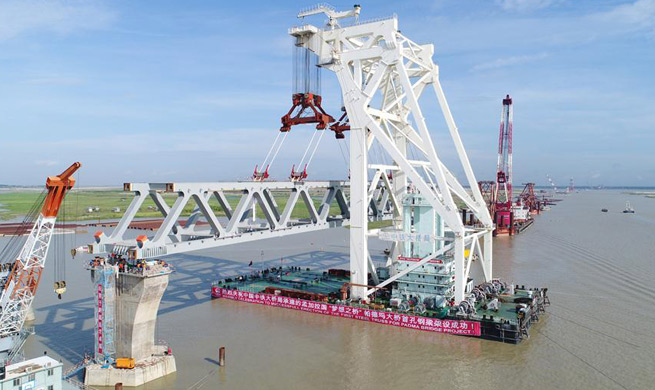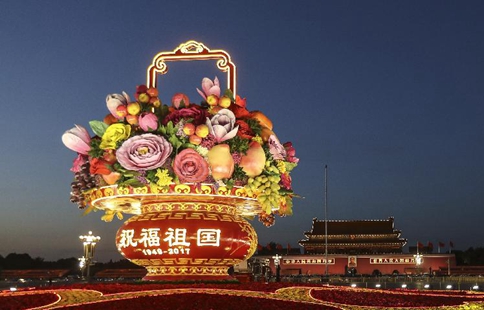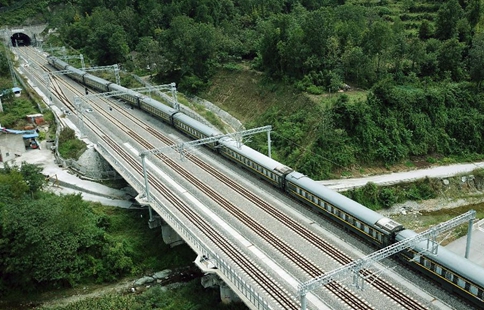BEIJING, Sept. 30 (Xinhua) -- China's manufacturing sector in September expanded at the fastest pace in more than five years, adding to evidence of a resilient broader economy as concerns over a loss of momentum had been on the rise.
The manufacturing purchasing managers' index (PMI) for this month came in at 52.4, up from 51.7 in August and 51.4 in July, the National Bureau of Statistics (NBS) said Saturday. A reading above 50 indicates expansion, while one below reflects contraction.
Having stayed in positive territory for a 14th straight month, the reading marked the highest level since May 2012.
"The indicator showed a stable upward trend in the manufacturing sector," NBS statistician Zhao Qinghe said, attributing the quickened expansion mainly to improving demand both at home and abroad and booming high-tech industries.
Sub-indices for production and new orders came in at 54.7 and 54.8, respectively, up from 54.1 and 53.1 last month.
"It suggested a better supply-demand relationship as orders surpassed production for the first time this year," Zhao said.
Equipment and high-tech manufacturing reported more rapid expansion, with their PMI figures at 53.3 and 52.9. The production of automobiles, electric apparatuses and other electronics saw the biggest increase.
Robust consumption in food, beverages and clothing ahead of an eight-day National Day and Mid Autumn Festival holiday period also contributed to the performance.
The stronger-than-expected factory activity helped brighten market sentiment as pessimistic analysts were betting on a loss of momentum in the Chinese economy, which had held steady in the first half of the year against lingering headwinds.
"With the notable pick up, the index is substantially higher than market expectations of 51.6... indicating steady demand," Beijing-based investment bank CICC said in a report.
CICC predicted economic activity will gain steam for this month.
"Over the short term, we believe the resilient demand growth and disciplined balance sheet expansion in the secondary industry will point to further improvement in manufacturing profitability and investment return," said the report.
China's economy expanded 6.9 percent in the first six months, well above the target of around 6.5 percent for the whole year.
But the manufacturing sector is not completely free of weakness and challenges, at least not for small firms more vulnerable to economic changes.
The divergence between industrial giants and small manufacturers widened. While large companies sat comfortably above the boom-bust line with a PMI reading of 53.8, small ones were still in contraction territory despite a mild recovery.
More than 40 percent of manufacturers surveyed were worried about price hikes in raw materials, especially those in downstream sectors. Indices of purchasing costs in printing, furniture and chemical industries surpassed 75 to reach high levels.
The monthly NBS manufacturing PMI tracks the activity of 3,000 businesses from 31 sub-sectors in the Chinese mainland, based on orders, production, employees, delivery time of suppliers, and stocks of raw materials.
Saturday's data also showed that China's non-manufacturing sector grew at the fastest pace since June 2014 in September, with its PMI standing at 55.4, up from 53.4 in August.
DIFFERENT PICTURES
A divergence was spotted between official and private indicators.
The Caixin China General Manufacturing PMI stood at 51 for this month, retreating from a six-month high of 51.6 in August, according to a survey conducted by Markit and sponsored by Caixin Media Co. Ltd. "While some panelists commented that improved market conditions had helped to lift sales, other firms mentioned that subdued client demand had weighed on growth," said the report, suggesting that production and new orders expanded at softer rates.
But the market was not surprised.
Analysts pointed out the NBS and Caixin surveys represented different aspects of the manufacturing sector: while the official result comes from a wide range of companies scattered around the country, the private one, which samples 500 manufacturers, mainly focuses on small businesses.
"The Caixin index is more volatile as its survey is more reliant on export-oriented small and medium-sized businesses in coastal areas, which can be more easily influenced by global impacts," said Li Chao, a research fellow at Huatai Securities.
Despite short-term disagreements, analysts agree that the two surveys point to the same trend in the economy in the long run.










